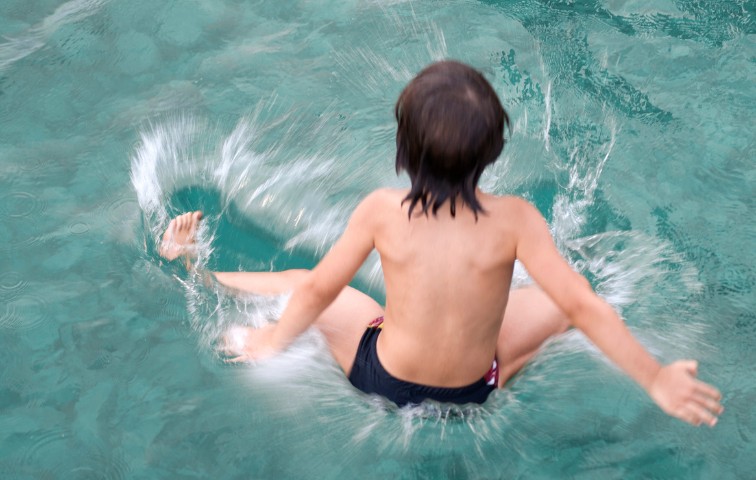
Cold Plunging: Transform your Fitness Journey Today
Cold plunge. A global phenomenon that has become popular, courtesy of its health benefits. Apart from becoming an online trend, it has also caught the attention of people from around the globe to get the right equipment for the same.
In case you are looking to understand what cold plunging is about, you have come to the right place.
Cold Plunges Defined
For those of you that don’t know what it is about, cold plunging is one aspect of cold water therapy or cold water immersion, which is a practice that involves immersing oneself in cold water temperatures, usually for some type of health benefit.
How to Cold Plunge
Cold water immersion can be performed in various locations, such as indoor or outdoor tubs, specially designed tanks or plunge barrels, local spas and even cold bodies of water.
Some studies suggest 50 to 59 degrees Fahrenheit (10 to 15 degrees Celsius) to be an optimal temperature range for cold plunges focused on reducing muscle soreness.
For individuals cold plunging for the first time, experts recommend gradually easing into the practice to build a tolerance to frigid temperatures. Beginners should aim for no more than 10 to 15 minutes of cold exposure.
Explore More
Perks of Cold Plunges

1. Improved heart health: In a 2016 review researchers noted several studies that suggest cold plunging or cold water therapy can boost blood flow, reduce heart rate, and improve overall cardiovascular health.
2. Improved metabolism: The same 2016 review suggests that cold plunges may have beneficial effects on metabolism and body fat, including a reduced risk of metabolic diseases and reduced body fat.
3. Reduced pain: There’s a reason ice baths have been recommended for sore muscles for generations — according to a 2022 review numerous studies have shown that cold water therapy can reduce swelling, lessen the perception of pain in the body, and speed muscle recovery.
4. Boosted mood: There’s a wealth of research to suggest that a cold plunge results in a temporary mood boost that may extend to long-term mental health benefits, including reduced anxiety and depression.
5. Improved insulin sensitivity: According to a 2022 review countless studies have shown that voluntary cold water exposure can improve insulin sensitivity and reduce insulin resistance.
6. Stronger immune system: In a 2016 study on cold showering — which has been shown to have a similar impact to cold plunging — researchers found the practice may improve the immune system of otherwise healthy adults. Showering in cold water, or for at least 30 seconds, resulted in a 29% reduction in sick days in participants. By comparison, regular physical activity resulted in a 35% reduction in sick leave.
7. Reduced inflammation: Cold plunges have been heavily associated with reduced inflammation. Since heightened inflammation is associated with a number of chronic conditions, this could potentially help stave off disease.
How to Do it? Cold Plunge
Plunge: Recovering after an intensive workout session is something that most individuals and even some athletes struggle with, which can lead to injuries. Cold bath recovery sessions have recently become mainstream, majorly because of their benefits.
This is where the Plunge comes in. It has taken the market by storm, and we are here to find out whether it is what the brand claims it to be or just another expensive publicity stunt for the rich. So, let’s get started with our plunge review.
The simple design comes up with plug-and-play technology that allows for quick installation without the need for a professional plumber. Simply fill the tub up to the brim with a water hose and turn it on to get started.
The fiberglass tub, combined with an acrylic design and metal base, ensures that it can be installed both indoors and outdoors.
It even comes with an underwater lighting system for early-morning or late-night plunges. An impressive 20-micron filter that picks up all kinds of debris or hair that it accumulates. The brilliant design allows for constant circulation of water to provide clean water for extended periods of time.
Accessories
- Cover: There is an insulated cover that can be locked to maintain the safety of young kids and to make sure that the water uses less power.
- Rubber Ducky: In case you feel too lonely with your cold Plunge, the firm even offers a rubber ducky to keep you company.
- Phone Dock: A suction cup phone dock is also available for use once you complete the purchase of the Plunge.
Conclusion
Cold plunging has become a global trend.Incorporating cold plunges into your routine can offer a range of benefits that extend beyond just physical recovery. From reducing inflammation and muscle soreness to enhancing mood and alertness, the cold plunge is a powerful tool for those looking to boost their overall well-being. While the initial shock of cold water can be intense, the long-term rewards—improved circulation, reduced stress, and enhanced physical resilience—make it a compelling practice for many.
Frequently Asked Questions
What is a cold plunge?
A cold plunge is a form of cold therapy where individuals immerse themselves in cold water, typically at temperatures ranging from 45°F to 55°F (7°C to 13°C). It’s often used to enhance recovery, reduce muscle soreness, and improve circulation.
What are the benefits of cold plunging?
Cold plunging can provide several benefits, including reduced inflammation, improved muscle recovery, enhanced mood, increased alertness, and potential boosts in metabolism. It may also improve circulation and help with stress relief.
How long should you stay in a cold plunge?
Beginners should start with shorter durations, around 1 to 3 minutes. Over time, individuals can gradually increase their time, aiming for 5 to 10 minutes as they become more accustomed to the cold.
Is cold plunging safe for everyone?
While many people can safely enjoy cold plunges, those with certain medical conditions, such as cardiovascular issues, asthma, or Raynaud’s disease, should consult a healthcare professional before trying it. Always listen to your body and avoid prolonged exposure to cold.
How often should you do a cold plunge?
Frequency can vary based on individual goals and tolerance. Many people find benefits from doing cold plunges a few times a week, while athletes may use them after intense training sessions.
What should I do before a cold plunge?
It’s advisable to warm up your body before entering a cold plunge. Engage in light exercise or stretching to prepare your muscles and circulation. Staying hydrated and breathing deeply can also help manage the shock of the cold.
What should I do after a cold plunge?
After a cold plunge, it’s beneficial to warm up your body gradually. You can do this by taking a warm shower, wrapping yourself in warm clothing, or using blankets. Hydrating and refueling with nutrients can also aid recovery.
Can cold plunges help with muscle soreness?
Yes, cold plunges are commonly used by athletes to help reduce muscle soreness and inflammation after intense workouts. The cold water can constrict blood vessels, reducing swelling and promoting recovery.
Is a cold plunge the same as an ice bath?
While they are similar, a cold plunge usually involves water temperatures that are not as extreme as ice baths. Ice baths typically use water mixed with ice to reach lower temperatures, while cold plunges are often just cold water without ice.
Can I do a cold plunge at home?
Absolutely! You can create a cold plunge at home using a bathtub, a large container, or a dedicated cold plunge tub. Just fill it with cold water, and you can add ice if you prefer lower temperatures. Always ensure safety by monitoring how your body reacts.
Our Best Pick





